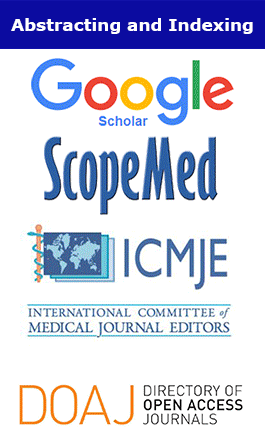Applied Medical Research. 2021;
8(1):(111-161)
Saudi Medical Research Articles Published in Pseudo Journals: An Urgent Call for Action
Dalia Abdulrahman Alansari, Sarah Saleh Aljdani, Maha Saleh AlJdani, Maha Hashem Awlia and Sameer Yousef Rizg
Abstract
Research is needed if we want to carry out the demands of a rapidly changing world. In fact, research and
education are closely linked to deliver the functions of a university. In recent decades, almost all universities
expect their faculty members to maintain scholarly activities, including conducting research and publishing
scholarly works. This pressure continues today with a paradigm shift among institutions from their previous
emphasis on effective faculty contact with students as a criterion for success, to developing cultures of
research and increase faculty research production. the researchers deemed it necessary to determine the
frequency of medical research articles in Saudi Arabia published in pseudo journals. Likewise, researchers
must be knowledgeable enough to discriminate between legitimate and predatory open access journal. It is
in this context that this study is being undertaken.
Results: The report focuses on the total number of Saudi medical research articles published in pseudo
journals from January to December 2018. Of the 3206 total articles identified and analized, 1531 (47.45%)
articles were published in legitimate journals. However, 1675 (52.25%) research articles were published in
85 considered possible/probable pseudo journals. Majority of the identified authors were students (353),
followed by medical residents (201), then interns (102) and physicians (42). The 604 were not clearly
identified due to lack of authors’ information.
Conclusion: The real existence and scope of predatory publishing must be discussed, debated and made
known to the young researchers and should be encouraged to publish in peer-reviewed journals that follow
the ethically accepted rules.



